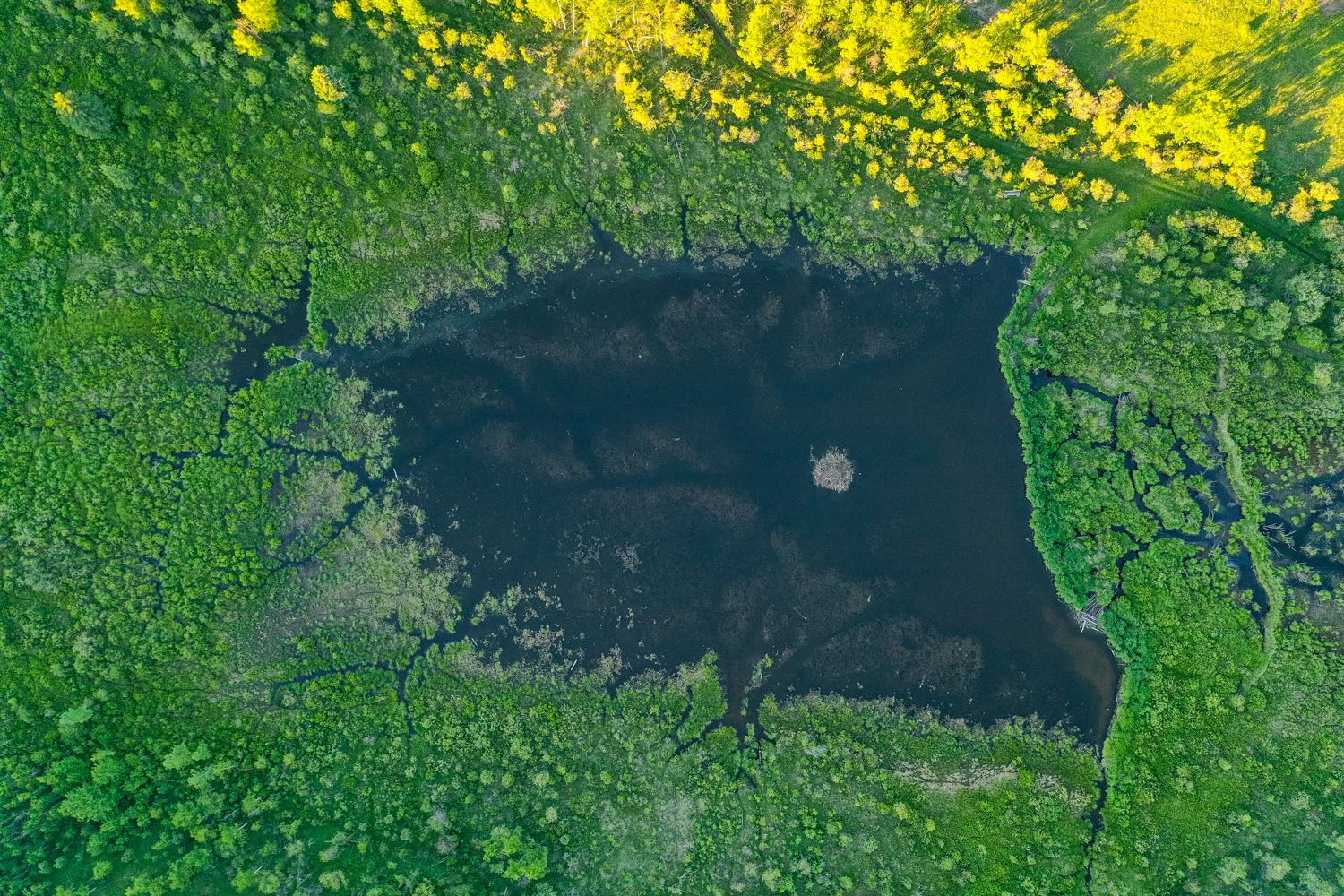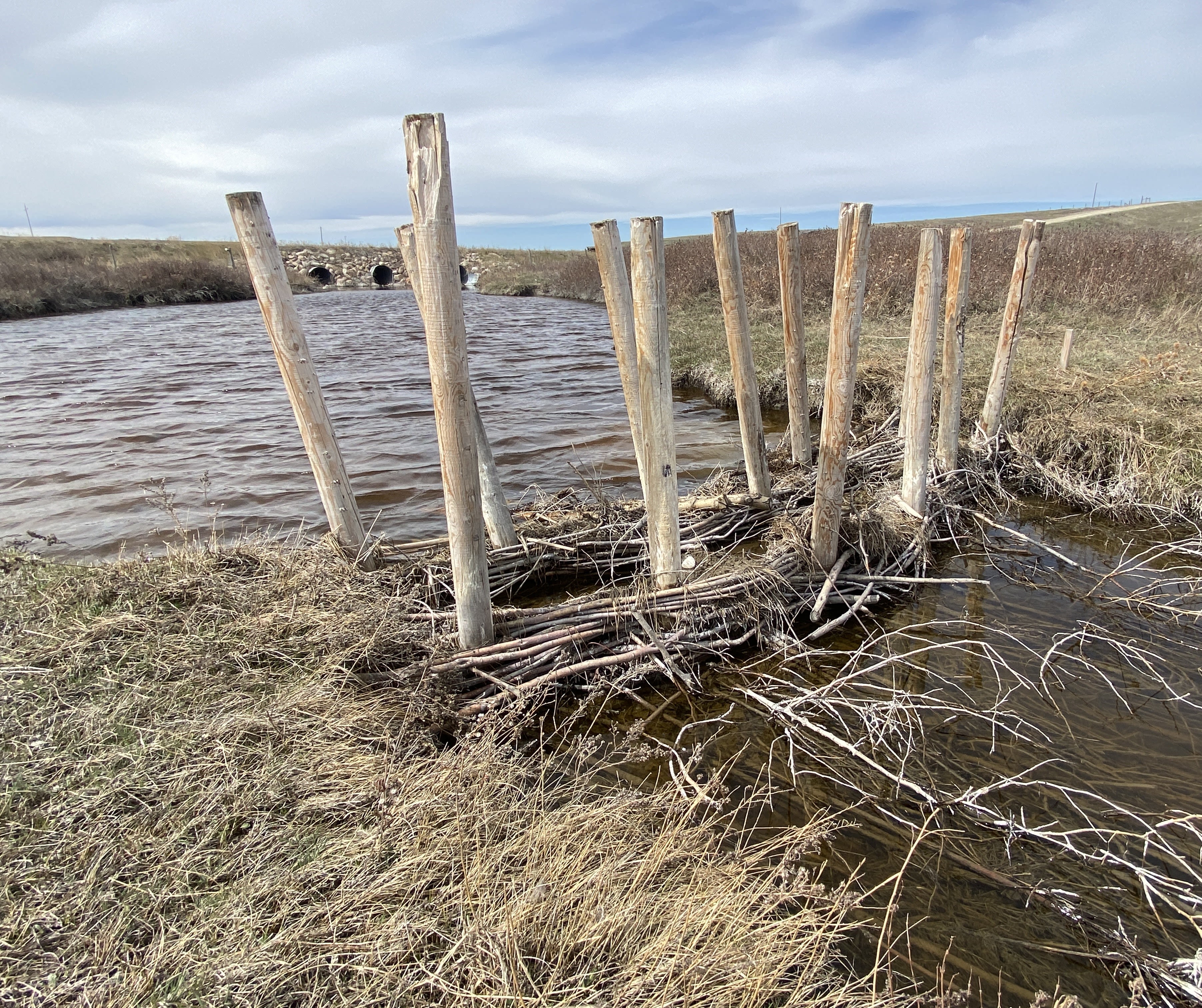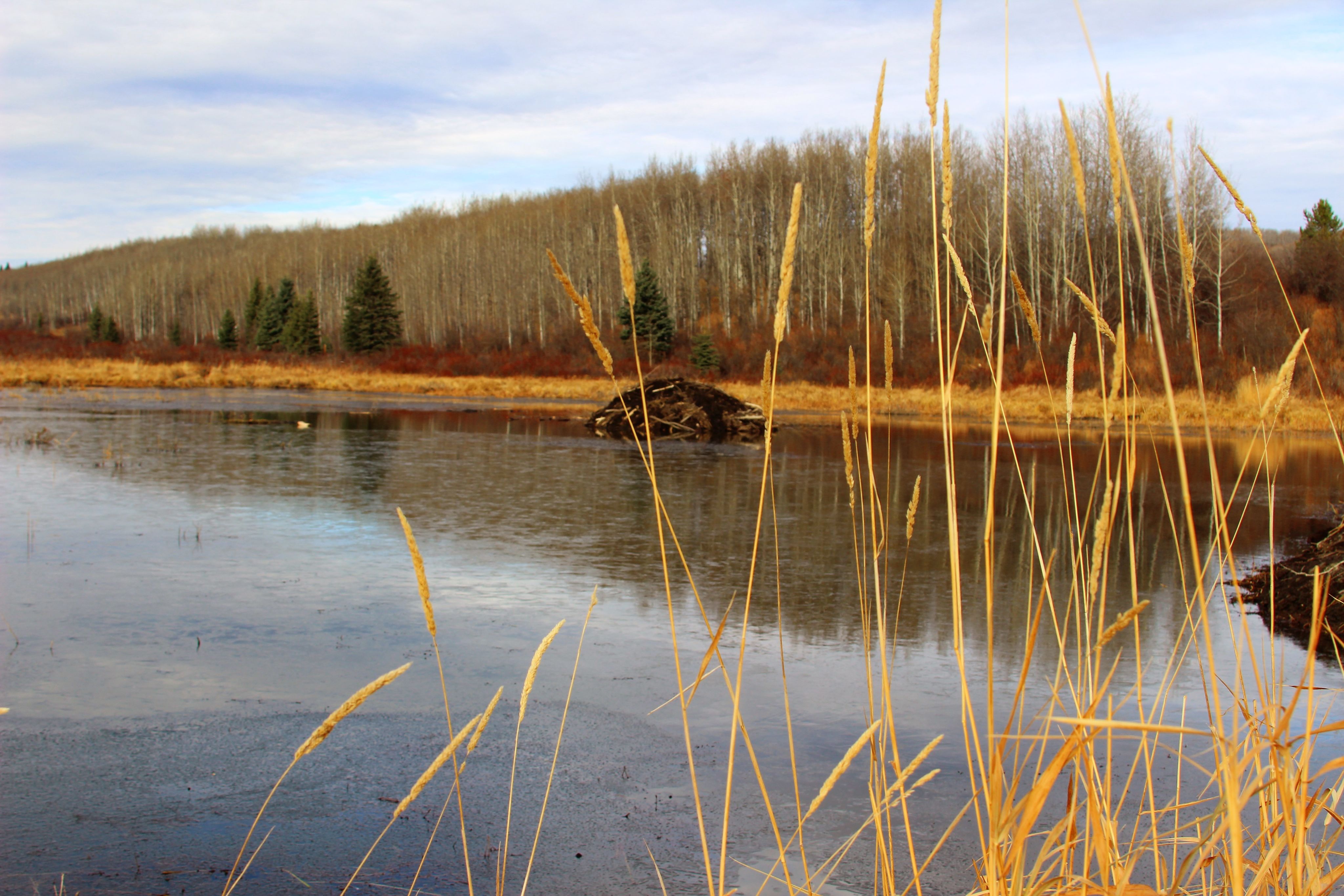Carbon storage afforded by the North American beaver

The extensive decimation of the North American beaver (Castor canadensis) by the late 1850s resulted in the degradation of many streams, ultimately leading to the loss of ecosystem benefits.
Before the European fur trade, beaver historically occupied North American river networks at a speculated density of 60-400 million; however, after the fur trade, there were only about 100,000 individuals, and their current population is an estimated 10-15 million. 4,10
Beaver engineering modifies rivers and streams by decreasing stream velocity, expanding the floodplain, and storing sediment and organic matter.4-6
These landscape modifications encourage substantial carbon storage and the regulation of GHGs like carbon dioxide (CO2) and methane (CH4).1-3, 7, 11
The alteration of carbon storage affects major ecological processes and is of particular concern due to the loss of beaver in the last century.
Although beaver populations are increasing, recolonization efforts are marginally successful because of the degradation of the stream system and can often take decades.8
Restoration practitioners and land managers are beginning to use Beaver Dam Analogues (BDAs) to help accelerate the recovery of stream systems and beaver populations.
Beaver dam analogues are a low-tech process-based stream restoration technique that mimics beaver impoundments, providing beavers with increased habitat quality and an opportunity to adopt and maintain the BDAs.19
Beaver dam analogues are not an exact replica of natural beaver dams, but they are expected to influence carbon storage in parallel ways to beaver engineering. However, beaver colonization should occur to realize the full extent of the carbon storage potential in BDA-treated streams. Carbon storage and the regulation of GHGs have important implications for mitigating the impacts of a changing climate.


Beaver and beaver-related carbon storage
Beavers store large amounts of carbon
Beaver-influenced streams store ~23% of the total landscape carbon.11
Beavers store carbon in a variety of ways
Through their building activities, beavers store large amounts of carbon by trapping sediment, submerging fallen trees and debris, increasing in-stream plant productivity, and slowing plant decomposition.
Beaver Dam Analogues can mimic the benefits that beavers provide
Although not yet quantified, BDAs can store carbon in ways parallel to beaver engineering and will store their full potential once adopted by beaver.
Ecological and food-web implications
Vegetation
During high flows, sediments from the stream channel are deposited onto the floodplain, which positively influences soil composition and the root distribution of plants. Improved soil coupled with increased water availability in and around beaver ponds facilitates the growth of riparian vegetation at the interface of the land and the stream (riparian area).
Insects
Seasonal litterfall from increased riparian vegetation serves as a food source for aquatic macroinvertebrates. Additionally, the expansion of riparian vegetation fosters habitat for insects.
Vertebrates
Insects are food sources for insectivorous fish and for a variety of birds including songbirds, grouse, and other waterfowl that depend on the wetland and riparian habitats.
Beaver-altered landscapes store vast amounts of carbon through various pathways, and to the extent that BDAs mimic natural beaver dams, they are expected to show similar patterns in carbon storage. Beaver and BDA restored streams have broader implications for maintaining critical ecological processes and food-web interactions. As beaver populations continue to recover and expand and the number of BDA installations increases, there are emerging implications for these restoration approaches as a tool for climate change resiliency. Using temporary dams as either a stand-alone stream restoration technique or to encourage the recolonization of beaver is a relatively new climate adaptation tool that may mitigate some uncertainties in water availability and buffer the impacts of carbon feedback in a changing climate.
Contact
Working with Beavers

References
1. Johnston, C. A. (2014). Beaver pond effects on carbon storage in soils. Geoderma, 213, 371–378.
2. Johnston, C. A., & Naiman, R. J. (1987). Boundary dynamics at the aquatic-terrestrial interface: The influence of beaver and geomorphology. Landscape Ecology, 1(1), 47–57.
3. Mitsch, W. J., Bernal, B., Nahlik, A. M., Mander, Ü., Zhang, L., Anderson, C. J., Brix, H. (2013). Wetlands, carbon, and climate change. Landscape Ecology, 28(4), 583–597.
4. Naiman, R. J., Johnston, C. A., & Kelley, J. C. (1988). Alteration of North American Streams by Beaver. BioScience, 38(11), 753–762.
5. Naiman R. J. & Melillo, J. M. (1984). Nitrogen budget of a subarctic stream altered by beaver (Castor canadensis). Oecologia, 62. 150-155.
6. Naiman R. J., Melillo, J. M., & Hobbie, J. E. (1986). Ecosystem alteration of boreal forest streams by beaver (Castor canadensis). Ecology, 67, 1254-1269.
7. Nummi, P., Vehkaoja, M., Pumpanen, J., & Ojala, A. (2018). Beavers affect carbon biogeochemistry: Both short‐term and long‐term processes are involved. Mammal Review, 48(4), 298–311.
8. Pollock, M. M., Beechie, T. J., Wheaton, J. M., Jordan, C. E., Bouwes, N., Weber, N., & Volk, C. (2014). Using Beaver Dams to Restore Incised Stream Ecosystems. BioScience, 64(4), 279–290.
9. Pollock, M. M., Wheaton, J. M., Bouwes, N., Volk, C., Weber, N., & Jordan C. E. (2012). Working with beaver to restore salmon habitat in the Bridge Creek intensively monitored watershed: Design rationale and hypothesis. U.S. Dept. Commer., NOAA Tech. Memo. NMFS-NWFSC-120, p.47
10. Seton, J. R. (1929). Lives of game animals. Volume 4, Part 2, Rodents, etc.
11. Wohl, E. (2013). Landscape-scale carbon storage associated with beaver dams. Geophysical Research Letters, 40(14), 3631–3636.






